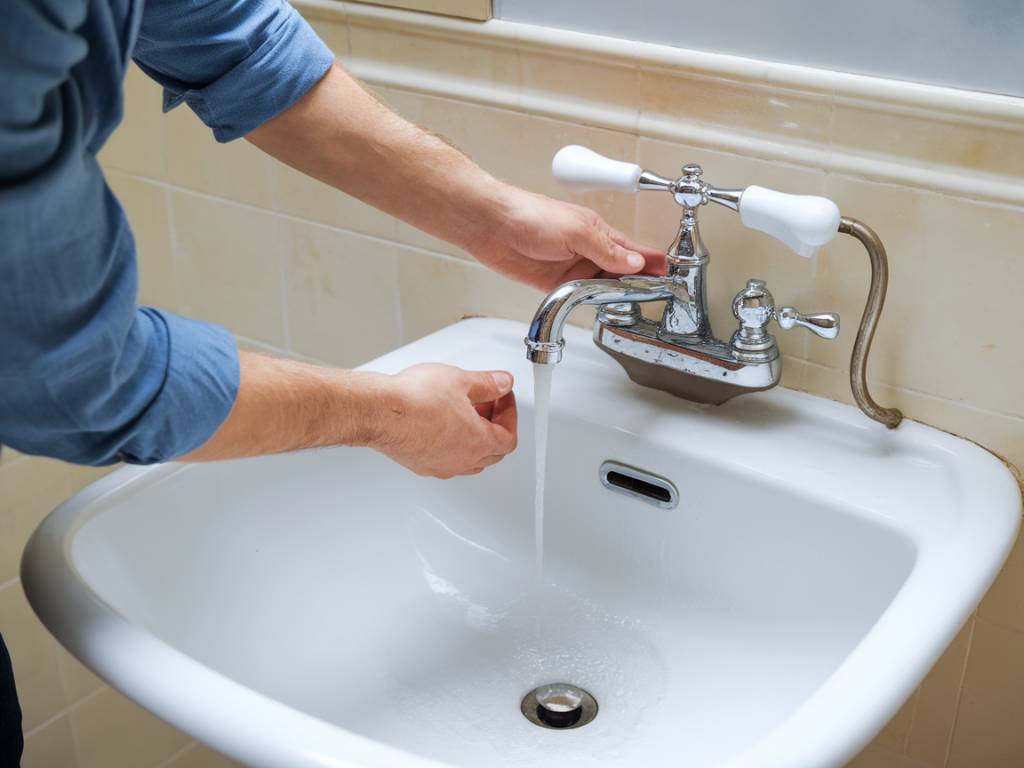Dealing with plumbing issues can be a real headache, not to mention an expensive one if you have to call in a professional plumber. However, many common plumbing issues are simpler to fix than you might think. With the right tools, a bit of knowledge, and some patience, you can tackle these problems yourself and save both time and money.
Understanding the Basics of Plumbing Systems
Before diving into specific issues, it’s essential to have a basic understanding of your home’s plumbing system. The plumbing in your house is divided into two subsystems: one brings in fresh water, and the other takes away wastewater. Freshwater is delivered under pressure through pipes, while wastewater is carried out by gravity.
Common tools you’ll need include a wrench, plunger, pipe tape, plumber’s tape, and a basic set of screwdrivers and pliers. Knowing where your main water shutoff valve is located can also be incredibly helpful in emergency situations.
Fixing a Leaky Faucet
A leaky faucet is one of the most common plumbing issues. Not only can it be annoying, but it can also waste a lot of water over time. Here’s how you can fix it:
- Turn off the water supply to the faucet.
- Remove the faucet handles. This usually involves unscrewing a decorative cap to reach the screws.
- Take apart the faucet to reach the cartridge. Remember the order in which you remove parts.
- Examine the O-rings and washers and replace them if they appear damaged or worn out.
- Reassemble the faucet and turn the water back on to check if the leak has stopped.
Unclogging Drains
Clogged drains are another frequent issue, but you don’t always need a plumber to clear them. Here’s a step-by-step method to unclog your drains:
- Start with a plunger. Make sure there’s enough water in the sink or tub to cover the plunger cup. Press down and lift repeatedly to create suction.
- If the plunger doesn’t work, use a drain snake. Insert it into the drain and turn the handle to break up the clog.
- Baking soda and vinegar is another effective method. Pour a cup of baking soda down the drain, followed by a cup of vinegar. Let it sit for about 15 minutes and then flush with hot water.
Fixing a Running Toilet
A running toilet can waste a significant amount of water over time. Fortunately, fixing it can be relatively simple:
- Take off the toilet tank lid and inspect the flapper. Often, the flapper doesn’t seal correctly, and water keeps flowing. If the flapper is worn out, replace it.
- Check the fill valve. Adjusting the fill level could solve the issue. Most modern fill valves have an adjustment screw or clip.
- If the problem persists, it might be worth replacing the entire fill valve and flapper assembly.
Repairing Low Water Pressure
Low water pressure in faucets and showerheads can make everyday tasks frustrating. Here’s how you can troubleshoot and fix low water pressure:
- Check if the issue is with a specific fixture or throughout the house. If it’s just one faucet, the problem usually lies with that fixture.
- Clean the aerator. Unscrew it and soak it in vinegar to dissolve lime buildup.
- If the showerhead has low pressure, soak it in vinegar to break up mineral deposits, or consider replacing it altogether.
- Inspect your home’s main water valve. Make sure it’s fully open.
Repairing a Burst Pipe
Burst pipes can lead to significant water damage very quickly. Here’s what to do if you encounter a burst pipe:
- Shut off the main water supply immediately to prevent further leakage.
- Drain the water lines by opening all the taps and flushing the toilets.
- Find the burst section of the pipe and cut it out with a pipe cutter, leaving enough room to install a new section.
- Measure and cut a new piece of pipe, then connect it using pipe couplings. Apply plumber’s tape to the threads for a better seal.
- Turn the water back on and check for leaks around the new section of the pipe.
Preventative Maintenance Tips
Prevention is always better than a cure. Regular maintenance can help you avoid many common plumbing issues:
- Keep an eye on your water bill for any sudden spikes, which could indicate a hidden leak.
- Periodically inspect pipes and fixtures for signs of wear or leaks.
- Flush drains with a combination of hot water, baking soda, and vinegar every few months to keep them clear.
- Insulate exposed pipes to prevent them from freezing in winter.
By paying attention to these tips and performing regular maintenance, you can save yourself a lot of trouble in the long run. Most common plumbing issues are easy to fix if you approach them methodically and with the right tools. Knowing how to deal with these problems can save you the expense and hassle of calling a plumber.

